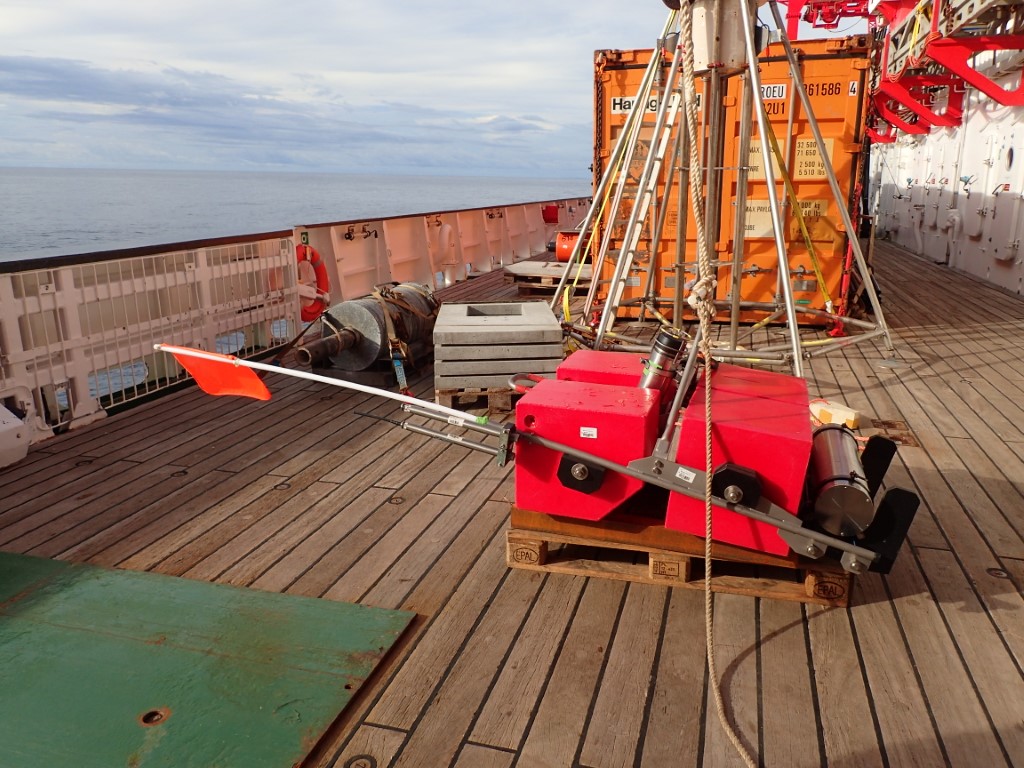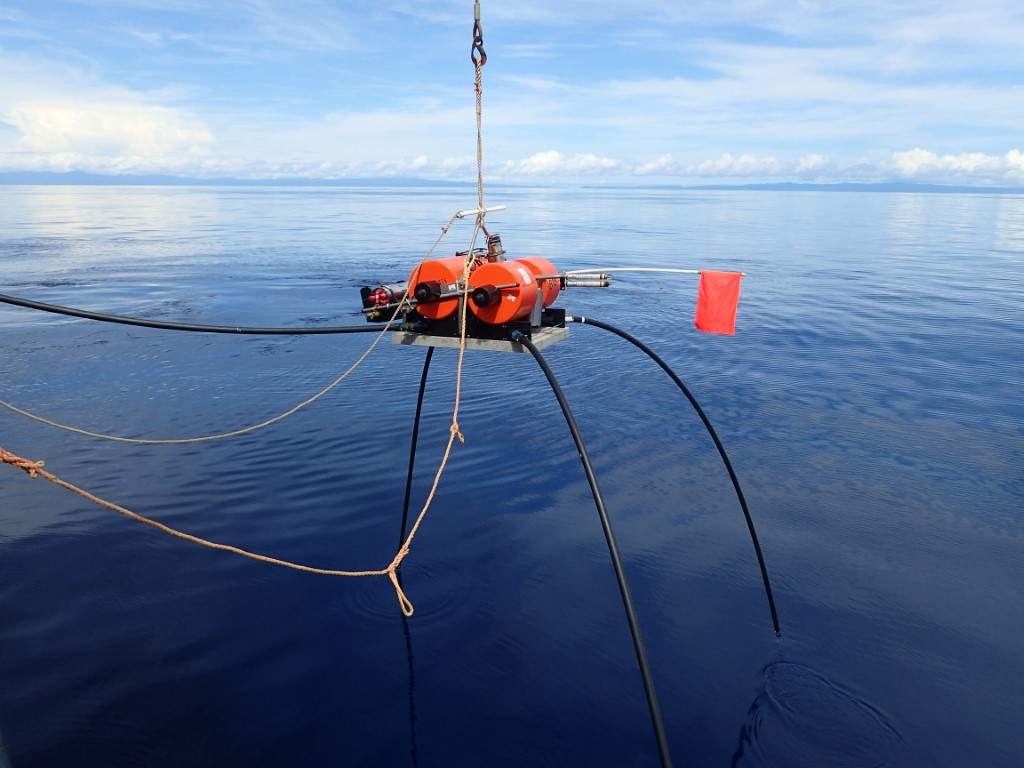To investigate the subsurface of the seafloor, we deploy geophysical instruments, which can „look“ below the seafloor bottom through the sediment and rock layers. We have two different types of devices, which complement each other.
- OBS stands for Ocean Bottom Seismometer, and is used to detect earthquakes.
- OBMT stands for Ocean Bottom MagnetoTellurics, and it can image magmatic melts and fluids in the crust and upper mantle.
The instruments are dropped to the seafloor as soon as we arrived in our research area and the instruments will remain there for the duration of our cruise. Thus they will collect data over several weeks.
Why we do this
The tectonic framework of the area is very complicated, like a 3D puzzle. The Indo-Australian and the Pacific Plate are converging obliquely. Stuck in between the two large plates is a mix of microplates, very young ocean floor and continental fragments. Here, compressional and extensional forces as well as lateral ones interact. As a result, our research area is criss-crossed by many faults and magmatism is evident from volcanic activity and hydrothermalism. Magmatic heat is driving fluid migration up from below. These hot fluids carry metals like copper, lead and gold. Their migration through crustal rocks and cooling leads ultimately to the precipitation of sulfide minerals and thus mineralisation and ore formation.
With our geophysical investigations we aim
- to identify these fluid pathways and how they are linked to the tectonic structure. The main research question being: What drives the magmatism?
- to define the plate boundaries between a set of microplates called South and North Bismarck Microplates and the crustal block of the Solomons. To answer the research question: What is the 3D architecture and the nature of the boundaries?
The results of these investigations will be combined with other studies we conduct during this cruise – to be reported in our Blog, so stay tuned!
How the technique works

OBS
Seismometers are instruments designed to record the Earth’s motions caused for instance by earthquakes. A frame is firmly attached to the ground and thus moves with the earth. While inside the instrument, a mass is hanging and by principle of inertia, it does not move along with the frame. This difference, the ground motion, is recorded in three dimensions of x-, y- and z-axis.
Waves passing through the crust travel at different speeds depending on the medium they pass through. Wave velocity increases with the density of the material. That’s why, for example, they travel slower through sandstone than through granite. In addition, reflection occurs at the boundary between layers of material with different velocities.
Extending these single-point information into a network of several stations, the combined information allow for a 3D resolution of events and features in the underground. For example, differences in arrival times of an earthquake wave allow to locate the source point of that particular earthquake.
For our field study we use natural seismic signals generated by earthquakes. Small earthquakes of magnitudes 3 or 4 occur almost on a daily basis.

OBMT
MagnetoTellurics (MT) is a passive electromagnetic method to determine changes in the conductivity structure of the subsurface. Naturally occurring variations in the earth’s magnetic field induce electrical currents into the subsurface, which directly depend on the conductivity structure, whereas the conductivity structure changes with differences in sediments, zones of mineralization, temperatures and the presence of fluids. Thus we deploy a network of Ocean Bottom MagnetoTelluric stations (OBMTs) on the seafloor that record both the local magnetic and electrical field.
What the instruments look like & deployment
The instruments are disassembled during transport. The OBS-OBMT-Team was very busy the first days of the cruise and already in the port to test the components and assemble the instruments. On a frame, a pressure-resistant, water-tight casing houses the measuring device. Batteries for power are also stored in a special casing. OBMTs have four 3 metres-long legs like a huge spider, with electrodes attached at the outward ends. The bright orange cylinders and red blocks, nicknamed „lobster“, are floating devices, which will bring the instruments back to the surface at the end of the cruise. Equipped with a radio beacon, a high-viz flag and a flashlight, we all will be on lookout to find the instruments bobbing at the ocean surface. Catching them cowboy-like with a rod and a loop is quite some task.
Hannah Zimmer
